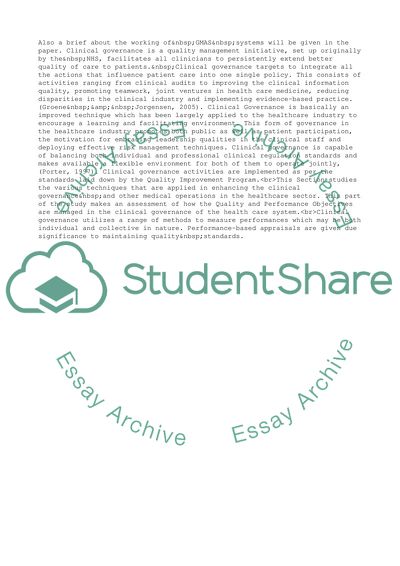Cite this document
(Introduction to Clinical Governance and Techniques Applicable in Clini Assignment, n.d.)
Introduction to Clinical Governance and Techniques Applicable in Clini Assignment. Retrieved from https://studentshare.org/management/1747044-identify-one-quality-management-initiative-developed-during-the-past-five-yearsin-relation-to-quality-managementquality-learning-environment-risk-management-or-quality-audit-in-your-area-of-practice
Introduction to Clinical Governance and Techniques Applicable in Clini Assignment. Retrieved from https://studentshare.org/management/1747044-identify-one-quality-management-initiative-developed-during-the-past-five-yearsin-relation-to-quality-managementquality-learning-environment-risk-management-or-quality-audit-in-your-area-of-practice
(Introduction to Clinical Governance and Techniques Applicable in Clini Assignment)
Introduction to Clinical Governance and Techniques Applicable in Clini Assignment. https://studentshare.org/management/1747044-identify-one-quality-management-initiative-developed-during-the-past-five-yearsin-relation-to-quality-managementquality-learning-environment-risk-management-or-quality-audit-in-your-area-of-practice.
Introduction to Clinical Governance and Techniques Applicable in Clini Assignment. https://studentshare.org/management/1747044-identify-one-quality-management-initiative-developed-during-the-past-five-yearsin-relation-to-quality-managementquality-learning-environment-risk-management-or-quality-audit-in-your-area-of-practice.
“Introduction to Clinical Governance and Techniques Applicable in Clini Assignment”, n.d. https://studentshare.org/management/1747044-identify-one-quality-management-initiative-developed-during-the-past-five-yearsin-relation-to-quality-managementquality-learning-environment-risk-management-or-quality-audit-in-your-area-of-practice.


